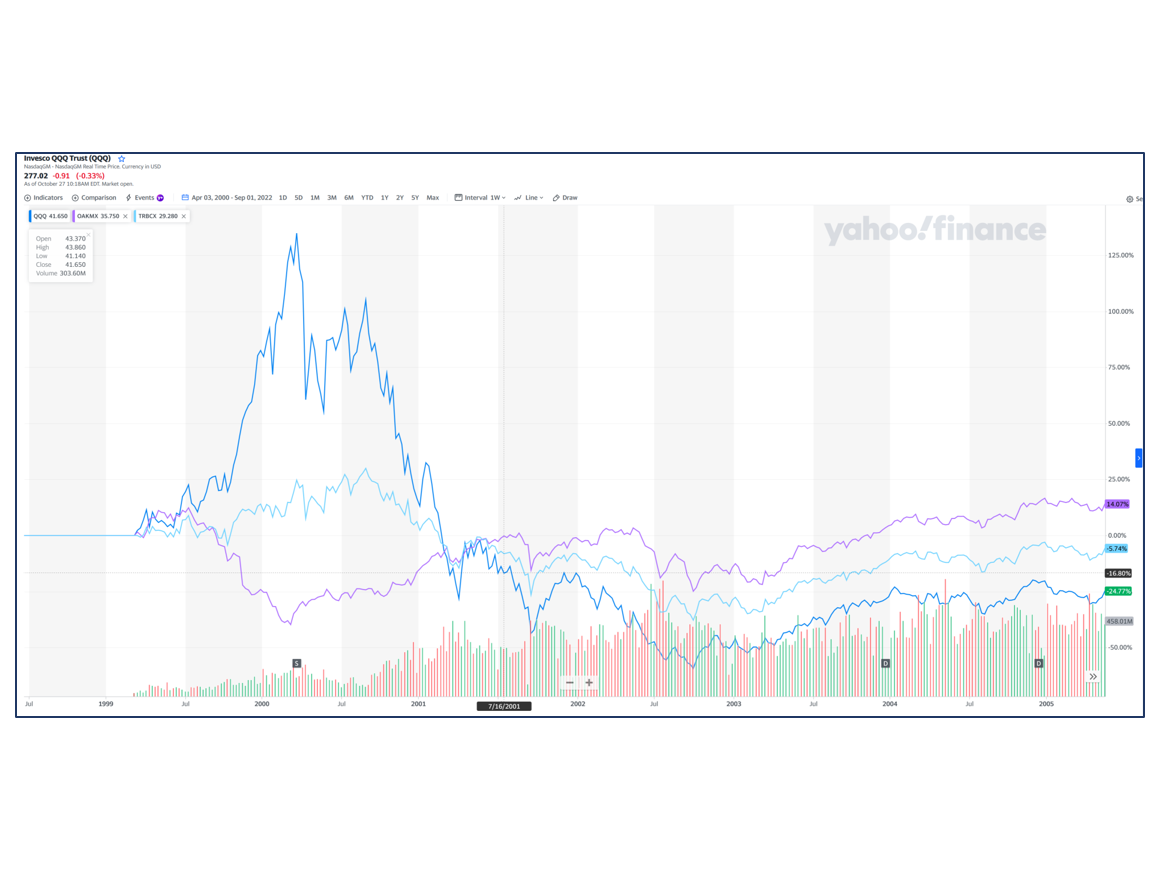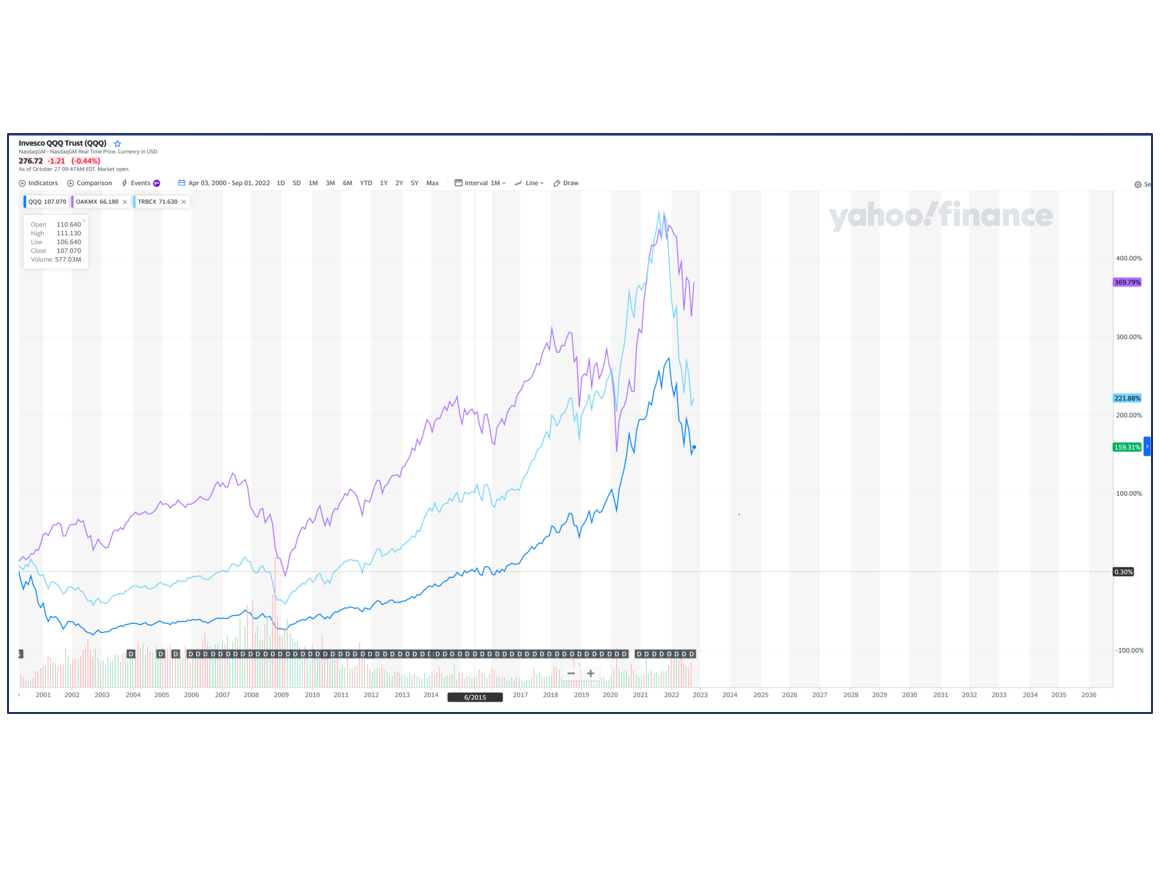
Our Vision
-

Market Cycles
Markets seem to behave in a cyclical fashion.
Markets have daily and short-term “ups & downs.”
Markets also have longer cycles (e.g., a 7-year Bull market followed by a 2-year Bear market).
Generational Cycles (Current generation repeating previous generation’s missteps)
Market cycles do not imply that markets are predictable.
We believe random investing is not a sound strategy.
-

Market Cycles can flow from any combination of the following:
Falling Inflation/Rising Inflation
Interest Rate rise/Interest Rate cut
Fiscal Stimulus/Deficit Spending
Change in Consumer Sentiment/Confidence
Economic or Fiscal Response to a Societal Crisis (e.g., 2008 Mortgage Loan Crisis, COVID Pandemic, Accelerating Inflation)
-

Government Adjustments & Consequences
In a crisis, Government acts to adjust markets and calm investors
Recent government adjustments include:
•Fiscal Stimulus
•Deficit Spending
•Interest Rate Cuts
Reviewing historical market activity reveals consequences of government adjustments
-

Our analogy between “artificial interest rate reductions as fiscal stimulus” and holding a volleyball underwater
We believe using artificial interest rate reductions as a fiscal stimulus is like holding a volleyball underwater.
Holding a volleyball underwater is unnatural and requires force. Similarly, we believe holding interest rates below the inflation rate is unnatural and requires force - eventually, inflation regains buoyancy just like the volleyball. Consequently, we believe that the Federal Reserve may lose control of interest rates and that government adjustments can only contain the organic movement of a free market temporarily.
-

Government adjustments stimulate a market cycle
The pursuit of “growth” assets has been a popular investment strategy due to the suppression of interest rates.
Some advisors recommend “growth” as a cradle-to-grave investment strategy. We believe market cycles reveal the need for flexible investment strategies.
-

Habit Is Not An Investment Strategy
We believe that when Advisors act habitually…
• They promote the growth investment strategy despite economic or fiscal events, and
• They promote “buy-the-dip” timing despite rising interest rates and high P/E ratios.
What happens to investors when advisors act habitually without considering an alternative?
-

Growth For The Sprint; Value For The Marathon
We have conducted our own independent studies of market cycles.
In those studies, we analyzed P/E ratios, consumer sentiment, and Federal Reserve policy, and we developed algorithms from the data to create growth and value allocation models. We believe growth will prove best for the sprint (i.e., the short-term) and value will prove best for the marathon (i.e., the long run).
-

Value Is Today's Alternative
Today, we believe value is best used as an alternative to high-priced markets within a high inflation context.
Our models do not deny the importance of growth, but our objective is to outperform growth by using a balanced blend of equities which lean toward value when there are extreme P/E ratios and high consumer confidence after a period of fiscal stimulus, followed by inflation-driven interest rate increases .
-

We believe there are similarities between both ends of this chart which are not coincidental.
QQQ (GROWTH ETF) AND TRBCX (GROWTH ETF) VS OAKMX (LARGE CAP VALUE ETF)
-

The 2000 inversion "pivot point" is the run up in "growth" which later proved to be short lived, fueled by withdrawals from "value"
3/1/1999 – 6/1/2006 QQQ (GROWTH ETF) AND TRBCX (GROWTH ETF) VS OAKMX (LARGE CAP VALUE ETF)
-

Today's "Pivot Point?" Does the bubble pop in growth spill back to value temporarily?
10/1/2021 – 10/20/2022 QQQ (GROWTH ETF) AND TRBCX (GROWTH ETF) VS. OAKMX (LARGE CAP VALUE ETF)
-

Why is the "Pivot Point" so important? Adjusting today's axis back to the previous pivot point makes value outperform?
10/1/1999 – 10/20/2022 QQQ (GROWTH ETF) AND TRBCX (GROWTH ETF) VS. OAKMX (LARGE CAP VALUE ETF)
-

Market Cycles Require Flexible Investment Strategies
Markets seem to behave in a cyclical fashion. The appearance of cycles does not imply that markets are predictable. The government acts during a crisis to influence markets and calm investors. Government adjustments can stimulate a cycle. Habitually using one investment strategy in a cycle is suspect.
When advisors act habitually in a cycle without considering alternatives, we believe investor confidence declines.
BLWM does not market time; we try to pay attention to the circumstances.
-

Growth for the Sprint; Value for the Marathon
We believe that a consistent growth-based strategy or a consistent value-based strategy would each be a viable method for a reasonable, responsible long-term return. However, a model that attempts to gravitate into growth for the sprints and weight back into value for the "inversion" and "pivot point" would have a high propensity to outperform either strategy alone, as long as it could effectively identify those pivot points in advance.
Growth for the (sprint) market run-up - Value for the (marathon) correction and rebound.
-

The Bottom Line
We offer a holistic planning approach to retirement that focuses on reduced fees and a balance between stability and growth.
At The Bottom Line Wealth Management LTD, we offer a holistic approach to planning your retirement.
We have the knowledge and experience to offer products that strike a balance between stability and growth in both a synergistic manner and a fair fee structure.
*All investments involve risk, including the loss of principal. Past performance is no guarantee of future results. Please note that references to specific securities within this piece should not be considered an offer or recommendation to purchase or sell that specific investment. It is important to note that investments in securities involve risk and will not always be profitable. ETFs, like all investments, carry certain risks that may adversely affect their net asset value, market price, and/or performance. An ETF’s net asset value will fluctuate in response to market activity. Because ETFs are traded throughout the day and the price is determined by market forces, the market price you pay for an ETF may be more or less than the net asset value. ETFs are not actively managed; therefore, their value may be affected by a general decline in the U.S. market segments related to their underlying indexes.
